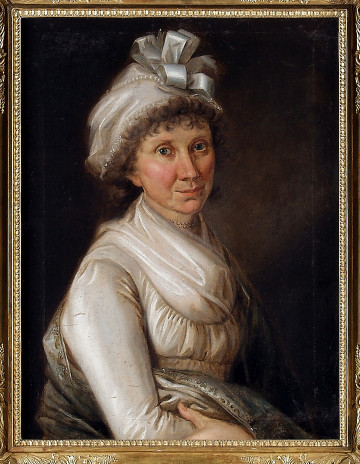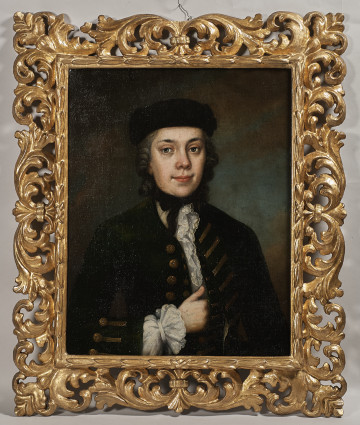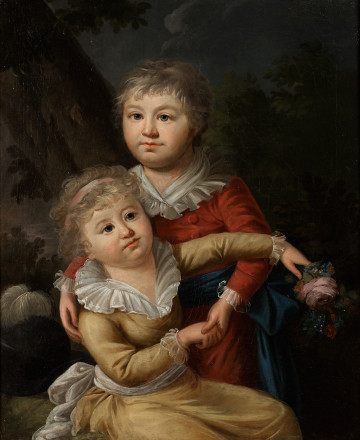
Portrait of Aleksandra Potocka, née Lubomirska
2nd half of the 19th century
Castle Museum in Łańcut
Part of the collection: Orient
A large plate of thick porcelain with a slightly raised rim, painted in underglaze cobalt, glazed in iron red and gold. Stylized floral and landscape patterns are reproduced on it. On the bottom two branches of chrysanthemums and peonies; in the wide rim: landscape and architectural motifs, partly obscured by stylised zigzagging golden clouds edged in red, partly with bands of blue mist, in a golden ‘brocade’ pattern. Floral motifs on the rim from the outside. It was created for export to Europe and decorated in the Imari style. This named refers to the port in Japan where the porcelain was manufactured – located about 6 kilometres south of Arita, in the province of Hizen, on the island of Kyushu. Products were transported from that port to Europe. The history of Japanese porcelain dates back to the early 17th century. Dishes were made from local materials – kaolin clay – from the 17th century onwards, initially inspired by the Chinese ceramics. In time, the multicoloured glazed decoration combined with blue under-glaze became a characteristic feature of the style. These patterns were called imari. Imported by Dutch merchants, they were very popular in Europe at the end of the 17th century and became a permanent piece of furnishing in fashionable Rococo and Classicist parlours. In the 1730s the production of imitated imari began in Meissen, Delft and other manufactures. The place of origin is Japan, the Arita label and style. Dated to the first half of the 19th century.
Object type
Orient
Owner
Castle Museum in Łańcut
Identification number
Location / status

2nd half of the 19th century
Castle Museum in Łańcut

3. ćwierć XVIII wieku
Castle Museum in Łańcut

1. ćwierć XIX wieku
Castle Museum in Łańcut
DISCOVER this TOPIC
Museum of King Jan III's Palace at Wilanów
DISCOVER this PATH
Educational path